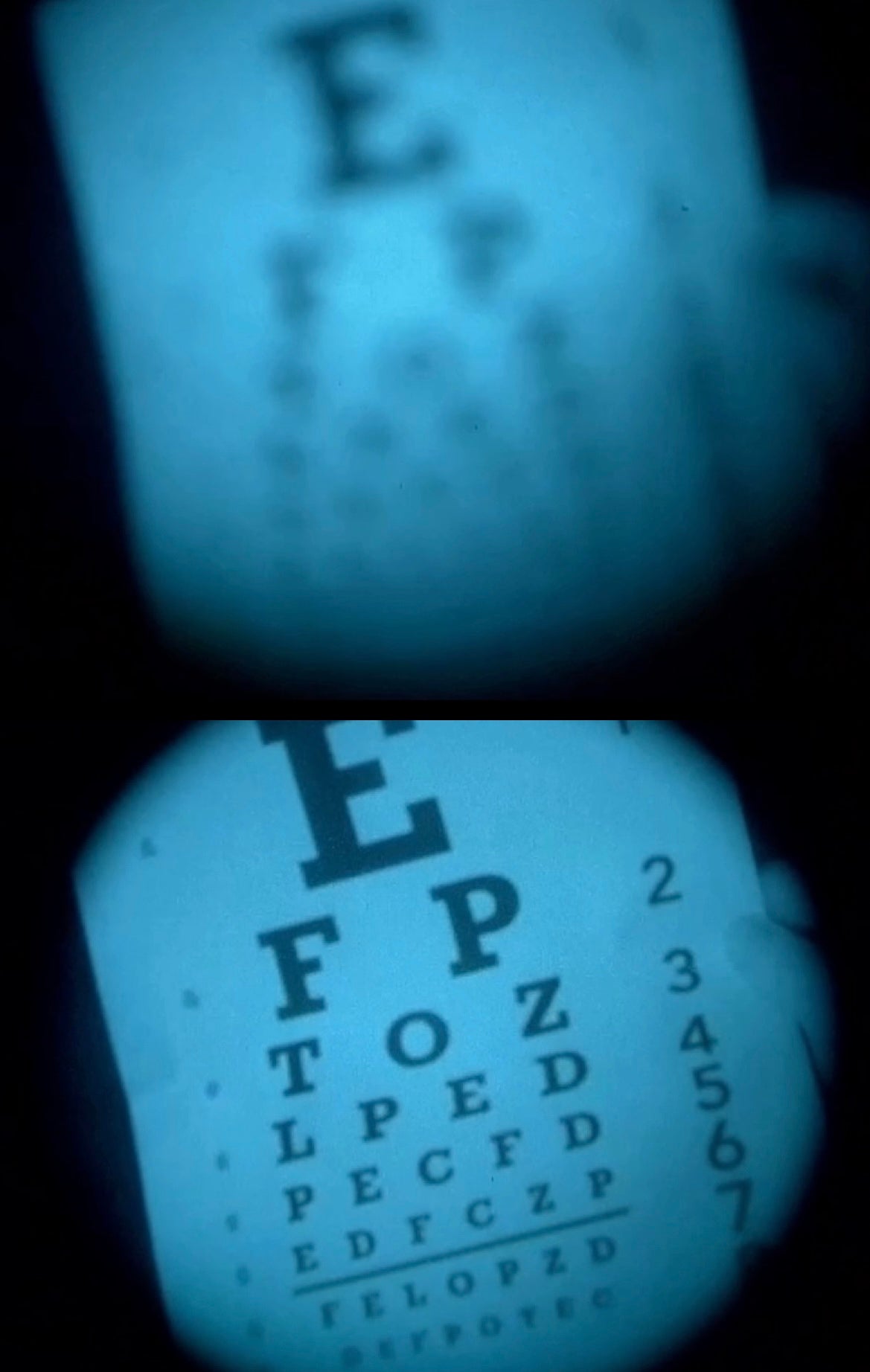
Analog Night Vision devices have a shallow depth of field (DOF). Once focus is set only objects within roughly the same distance of the focal point will be in acceptable focus. When focusing your device you will set it at a preferred focal distance and use it in that manner. If close focus is needed you will have to adjust your objective lenses to shift your focal point to the new distance. Once at this close distance objects far away will no longer be in focus. To put this into perspective: with your unaided eyes look at something far away and hold your hand off to the side of whatever you’re focusing on. The object in focus far away will be clear and your hand will be blurry. Now look at your hand. Your hand is clear and objects at distance are blurry.
So how do reduced aperture devices benefit Night Vision use? Reduced aperture devices increase depth of field on Night Vision devices. This means objects at greater varying distances will still be within acceptable focus. A simple way of thinking about this is with your device focus set at 50m objects from/around ~30-70m would be within “acceptable” focus. Anything outside of this distance range would become blurry. With increasing blurriness the farther the distance relative to the set focal distance. With a reduced aperture the distances in which objects are still in focus, relative to the original focal point, increase greatly. For instance, objects anywhere from 5m to 100m+ could be in focus relative to the set 50m focal distance, depending on aperture size. This depth of field gain could be increased from a few meters to infinity depending on how small the aperture is.
Decreasing the aperture size simultaneously increases the depth of field. The smaller the aperture the greater the depth of field increase. However, it is important to understand with a smaller aperture comes reduced light intake. Reduced light translates to a darker output image and increased image noise.
Reduced aperture devices aren’t required for use but are helpful in certain situations. In more light polluted environments you can gain DOF without sacrificing brightness much, if at all. Increasing DOF translates to an increase in information you’re receiving. As now you’re able to resolve objects are greater distances relative to your focal point. Other environments or tasks increasing DOF can be beneficial include: driving, administrative tasks, or other situations in which you need simultaneous close and far focus.
There are a variety of ways to increase DOF. The rubber dust cover with small pinhole that likely came with your device can be affixed or held up to the lens momentarily to increase DOF as desired. These are also known as daylight filters, day caps, day covers, etc. Though we do not advise operating your device in daylight. Specialized devices, such as the Matbock Tarsier Eclipse, Phokus Research Hoplite, and others incorporate built in sacrificial windows to provide a layer of protection. The Tarsier Eclipse is an iris device the user can open or close at their will to dial in precisely how much DOF they wish to gain. Offering focus from 3” to infinity. Simply open the iris for normal lens function or close it to your needs. The Hoplite features pre-sized aperture “holes” in a flip cap style operation. With the cap open it stays out of your field of view. When you need to employ it just flip it closed. Of course there are other ways to accomplish the same goal too, such as scope caps with holes punched in them. They’re not as precise a fit, don’t look as clean, or offer protection in the same way specialized purpose built devices do, but they can work and are inexpensive.
So should you buy a reduced aperture device and do you need a reduced aperture device? Ask yourself if any of these benefits pertain to your use. If they do, then begin working through the process of elimination in determining which device will fit your preferences best. Do you want a completely adjustable device with a built in sacrificial window? Do you want a pre-sized aperture with a sacrificial window? Do you not care about a protective lens and only wish to gain DOF? Don’t spend money just to spend money. Really hone in on what option suits your needs best.
If you’ve never tried one of these devices before, or are unsure if they would benefit you, we recommend buying a flip cap scope cover of appropriate size and punching a hole in it. Start with a smaller hole as you can always make it larger if you need. Spend some time using it and see if you enjoy the function. If you do then it might be worth it to invest in a purpose built device that offers some additional benefits over a scope cover.
